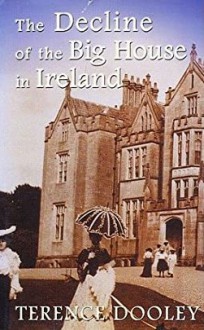
At the start of the 1870s, the great landed families of Ireland sat prosperous and sovereign in their communities. A half-century later, however, theirs was a class in terminal decline, suffering from the effects of a succession of economic and political blows. In this book Terence Dooley charts the course of the fall of the Irish landed elite, detailing the steps in their collapse and analyzing the factors behind it. As he explains, there was no one circumstance or event behind it but instead a series of developments – some global, others local – which brought an end to the social class which had dominated life in Ireland for centuries.
Dooley begins by detailing “big house” life in high Victorian Ireland. Flourishing amidst the economic prosperity of the period, numerous families flaunted their wealth by refurbishing their homes and loading them with art and other acquisitions purchased from the continent, which they often financed through loans and mortgages. Few anticipated that the good times might come to an end, leaving them unprepared when the agricultural economy went into decline in the late 1870s. With indebtedness growing, many landowners sought to maintain their income by raising the rents they charged to tenant farmers. Unable to pay the higher rents the tenants went on strike instead, further crippling landowner finances and exacerbating their financial woes.
In response to the political pressure imposed by the poorer and more numerous tenant farmers, Parliament passed a series of acts designed to facilitate the transfer of the land from the large landowners to the tenant farmers. This initiated a process of land transference that accelerated in the early twentieth century with further increases in the financial incentives for landowners to sell. By then many landowners desperate for money had already curtailed their expenditures and sold off valuable furnishings in the hope of stabilizing their situation or at least delaying their decline.
Instead, their decline accelerated with the outbreak of war in 1914. Dooley describes the blows suffered by many families with the loss of sons and husbands who fell in battle. These individual setbacks were soon compounded by the newly-empowered independence movement, which by 1920 was waging war against the British state. The big houses were prime targets for the Irish Republican Army, both as sources of firearms and as hated symbols of British occupation. Many of the houses themselves were burned down to drive out the pro-Union landowners and to prevent the buildings from becoming barracks for British forces. By the end of the Irish Civil War in 1923 the landowning class thus found themselves gutted and friendless, without even a semblance of their former status and power in Irish society.
In many respects the story Dooley tells echoes that of David Cannadine’s seminal work The Decline and Fall of the British Aristocracy. Like Cannadine, Dooley explains the various forces squeezing the Irish aristocracy as a class, to which he adds the unique circumstances facing them because of Irish nationalist politics. While their British counterparts suffered from the same economic crisis, they were spared the political assaults of the Land War and the independence movement that delivered the fatal blows that wiped them out for good. It’s an important aspect of Irish history that Dooley recounts well, making his book an important account of the transformations taking place in Irish society in the nineteenth and twentieth centuries.

 Log in with Facebook
Log in with Facebook 








